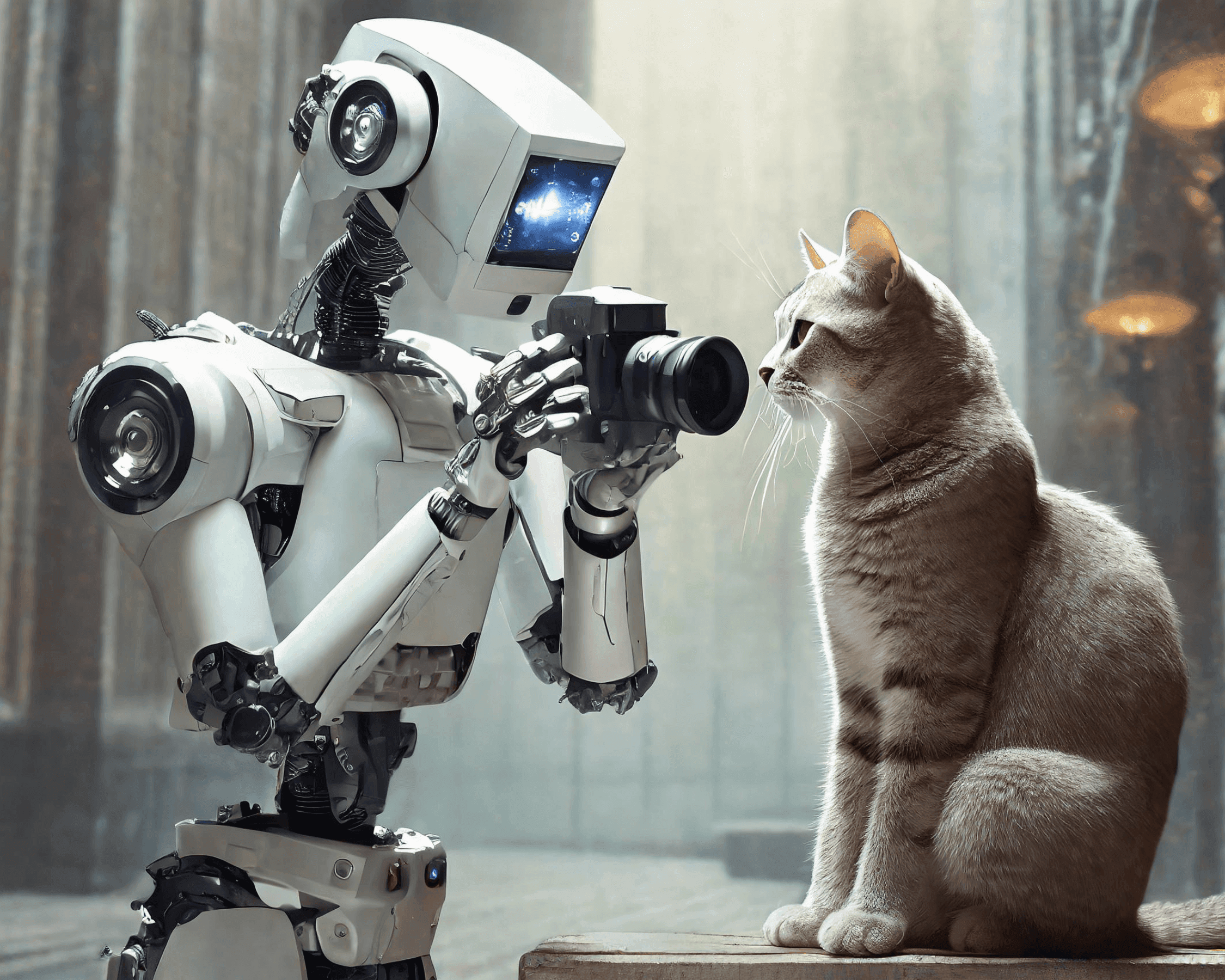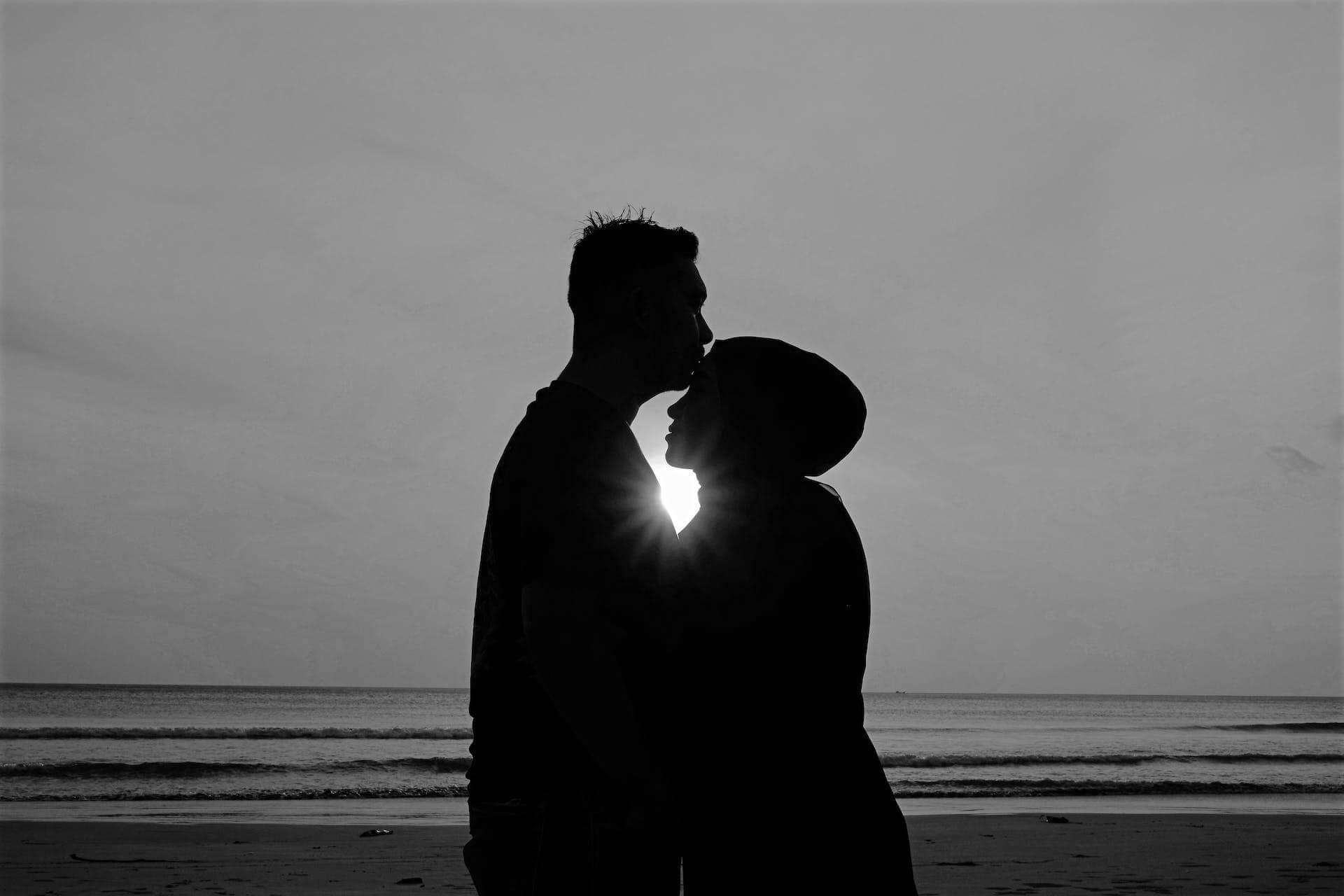Is There Such a Thing as AI Photographs?
Yvan Cohen
Mon Jan 22 2024

AI photographs, and AI in general, was one of the hottest topics of 2023. How will this radical new technology impact and re-shape our societies. Will it be a force for good or evil? How will it transform our understanding of authenticity, of art and of the creative process?
For photographers, AI is a particularly controversial issue. There are those who see AI as a way of opening up new creative frontiers. Critics see it as a challenge to photography and art itself; a system that will mimic human creativity so efficiently that we will struggle to distinguish human art from machine-made creations.
As AI generated images flood the internet, their realism prompts comparisons with photography. But can there be such a thing as AI photography when the processes by which AI images are created and the technology used to create them is so far from photography’s origins?
“…the alchemy of chemistry”
When it burst onto the scene in the late 19th century, analog photography revolutionized our understanding of the image and of art itself. In the click of a shutter, the skill and draughtsmanship of the traditional artist was replaced by the power of engineering and the alchemy of chemistry.
For artists, whose talent and dexterity had been relied on to create likenesses of people and events, photography was undoubtedly terrifying. Nineteenth century French painter Paul Delaroche gloomily declared “from today, painting is dead”.
 Man Developing Pictures in a Darkroom - Photo by Annushka Ahuja
Man Developing Pictures in a Darkroom - Photo by Annushka Ahuja
The camera as an instrument of witness
The revolutionary essence of photography was its ability to faithfully describe real life. Point a camera at a scene, expose photosensitive material to light and the resulting image appeared to be an accurate portrayal of what had passed before the camera’s lens. By virtue of its ability to instantly translate life into art, the camera became not just a tool to create images but an instrument of witness and a reliable means of recording human history.
An impassive mechanical eye that could capture moments in time. Photographic images appeared to give us direct access to fragments of reality – we saw what the photographer saw. The camera was seen as a purveyor of truth.
Photojournalists have dedicated (and often risked) their lives to photograph moments that make us aware of truths that might otherwise remain unseen. The instantaneous reaction between light and celluloid gave analog photography a sense of immutable authenticity.
Sceptics argue that photography has never shown us the truth. That it is misleading to confuse a picture with reality. A photographer chooses his frame, his angle and his moment. The camera and the photographer, so the argument goes, have always provided us with an edited representation of life.
Whatever one thinks about how a camera is used to frame a picture, or about the editorial choices of the photographer, analog photographs have given us some of the most powerful, most moving and the most realistic records of modern human history. Photography has shown us what war looks like, what it means to starve, or to fight a revolution. It has changed our understanding of the world.
 Person Taking Photo on Professional Camera Outdoors - Photo by PNW Production
Person Taking Photo on Professional Camera Outdoors - Photo by PNW Production
Digital technology has transformed our perception of photography
We’ve come a long way since the analog origins of photography. Today photographs are rarely recorded to film. Digital technology hasn’t just revolutionized how we create and record pictures, it has wrought a profound change in our perception of photography and of photographs themselves.
Where once analog photographs were seen as reliable records seared into celluloid, the digital photograph is understood to be fragile, ephemeral and infinitely malleable. Delete a person here, add a smile there, change the moon and the sky if you wish.
Photography, like art, is becoming more about what the image represents than what the camera documented. And yet, for now, photography still trades on its reputation for authenticity. We still turn to editorial news pictures to show us what really happened. The underlying belief in photography still persists, even if it is tainted by a growing sense of doubt.
AI promises to turbocharge that doubt.
AI photographs are never framed by a photographer
AI images are generated by verbal or textual prompts, fed into a piece of software that generates composite pictures that are photo-realistic but were never framed by a photographer holding a camera.
Donald Trump being arrested, the Pope wearing a Balenciaga puff-coat are among the best-known examples of AI photography showing us a world that doesn’t exist and that was never recorded by a camera. And yet, the photo-realism of the pictures we see prompts us, instinctively, to believe in them.
AI photography forces us to ask fundamental questions about authorship, authenticity and the nature of photography itself.
If AI photographs are composites of countless other images, who is the author? The person who entered the prompt that triggered the machine to re-assemble its machine-harvested photo fragments? The people who programmed the machine to be able to perform such mind-bending visual tricks? Or the machine itself, which has begun to assume a form of autonomy in the creative process? Or all of the above?
 A Robot Holding a Cup - Photo by Pavel Danilyuk
A Robot Holding a Cup - Photo by Pavel Danilyuk
In a post-AI digital world can photography still be a tool of witness?
In a post AI digital world, where the virtual and the real start to overlap, concepts of photography as a tool of witness evaporate. Pictures revert to being just that, pictures.
The miracle of photography and the revolution it represented was anchored in a technology that literally captured fragments of time, searing instants of reality into a medium, where those moments remained preserved for posterity.
How then, can we refer to AI-generated images that were never seen by a human holding a camera, that are not a representation of any one moment in time and space, as photography?
Surely, we need a new term for this art form, so it can be clearly distinguished from the discipline of photography which is so entirely different in both process and essence. Photographers can be both artists and documentarians but you cannot sit at a keyboard creating photorealistic images and claim to a photographer.
There is indeed some irony in the fact that progress has moved us away from an analog technology that provided us with the most reliable and permanent means of recording reality. Just as the painter’s blank canvas provides infinite possibilities for visual creativity, so AI can be the starting point for an artistic journey of infinite possibilities.
But let’s be clear that journey is not photography and the question of who is the creator will become increasingly blurred.
Written by Yvan Cohen | Yvan has been a photojournalist for over 30 years. He’s a co-founder of LightRocket and continues to shoot photo and video projects around South East Asia.
Cover image created with AI using Adobe Firefly (https://www.adobe.com/products/firefly.html)
To read more helpful articles on photography, check out our blog page.
Join our growing photographer community at LightRocket and get powerful archive management and website building tools for free!


